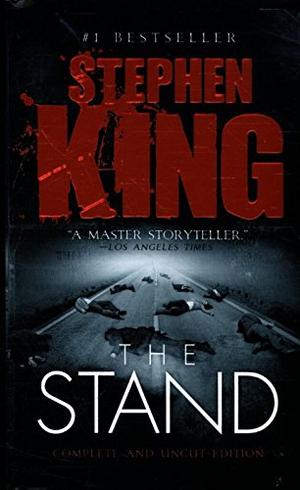Stephen King’s “The Stand” is not merely a novel; it is an intricate tapestry of human experience woven through the threads of a post-apocalyptic landscape. Imagine a world ravaged by a pandemic—a world teetering on the brink of annihilation. Would you rise to the occasion, or would you succumb to the chaos? This fundamental question reverberates throughout King’s magnum opus, challenging readers to ponder their own responses in the face of despair.
At the heart of “The Stand” is the catastrophic outbreak of Captain Trips, a superflu virus that annihilates 99.4% of the global population. The narrative begins with an eerie sense of normalcy, contrasted sharply by the rapid descent into anarchy and widespread demise. King introduces us to a cast of characters that are as varied as the situations they encounter. Each character is meticulously sculpted, embodying distinct facets of humanity, from the fiercely optimistic to the deeply flawed.
The novel juxtaposes two primary factions: the benevolent Mother Abagail, representing light and hope, and the malevolent Randall Flagg, embodying darkness and chaos. As these two forces vie for dominance, the reader is drawn into a compelling moral struggle that resonates with contemporary controversies surrounding leadership and ethical dilemmas. The dichotomy between good and evil elicits the question: in a world devoid of societal structures, how do we determine what is right?
King paints a vivid tableau of human resilience and vulnerability. We see characters like Stu Redman, a humble Texas man who emerges as an unlikely leader, and Frannie Goldsmith, a young woman grappling with her own fears while navigating her newfound reality. These individuals, along with others like Nick Andros, a deaf-mute with an unparalleled insight into the human condition, illustrate the spectrum of responses to catastrophe. One must ponder, could you stand by your principles when survival is at stake?
A meticulous examination of King’s prose reveals more than just a gripping narrative; it unveils a deep psychological exploration of humanity. The author delves into the psyches of his characters, presenting their internal conflicts and moral quandaries with unflinching candor. This psychological depth beckons a reflective inquiry: how do we confront our inner demons when there is no societal order to impose moral frameworks?
“The Stand” is not only a tribute to the resilience of the human spirit; it also serves as a foreboding mirror reflecting contemporary societal issues. The rise of fear, misinformation, and despair feels eerily relevant today. King compels us to examine our responsibility in fostering communities and supporting one another during tumultuous times. In an era defined by division, is there a greater challenge than finding common ground with those who may be diametrically opposed to our beliefs?
As the story unfolds, the stakes escalate, ultimately leading to a showdown between the forces of good and evil. The confrontation in Las Vegas is a veritable crucible, testing the limits of courage, loyalty, and resolve. Here lies a pivotal moment: will the characters choose self-preservation or sacrifice for the greater good? This trope invites introspection—what would you be willing to sacrifice to uphold your ideals?
The richness of King’s world-building cannot be overlooked. He meticulously creates a post-apocalyptic America that feels all too plausible. The descriptions are vivid, allowing readers to imagine the desolation and beauty of a world rebuilding itself from the ashes. Every page is infused with a sense of urgency, crafting a visceral reading experience. In what ways does the lingering presence of nature’s beauty amid destruction resonate with our own experiences of loss and regeneration?
Stylistically, King employs an intricately woven narrative, punctuating the story with elements of horror, fantasy, and deep philosophical undercurrents. The medical horror of the superflu juxtaposes the existential horror of human nature in crisis, creating a multifaceted reading experience that transcends genre conventions. Readers are invited to abandon simplistic interpretations of good and evil and explore the murky waters of human motivation. Can we truly label anyone as purely evil, or is every villain merely a product of their circumstances?
Ultimately, “The Stand” offers a contemplative exploration of hope and despair, leadership and chaos, community and isolation. It challenges us to engage with provocative questions that linger long after the book is closed. In a time when the world feels particularly fragile, King’s work acts as both a cautionary tale and a beacon of perseverance. If faced with your own apocalypse, would you rise to the occasion, or would you retreat into the shadows? The narrative implores its readers to visualize the paths they would choose, urging self-reflection and insight.
In conclusion, whether you are a seasoned Stephen King aficionado or a newcomer venturing into his enthralling world, “The Stand” offers profound insights into the human experience that are as relevant today as they were at the time of its publication. It serves as a reminder of the delicate balance between light and darkness that defines our existence, compelling us to consider the choices we make and the legacies we leave behind.
